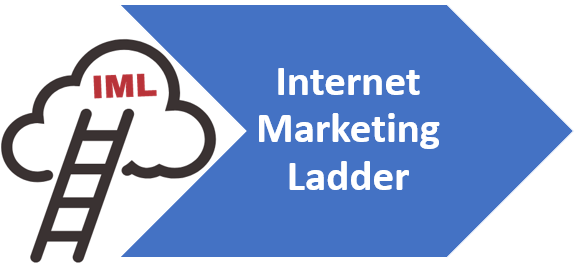Shopify Cost Guide UK: Mastering E-commerce Costs for IT Users
Navigate Shopify pricing like a pro with our UK cost guide. Tailored tips for tech-savvy users to reduce expenses and increase profits.
Introduction – Shopify Cost Guide UK
In the ever-evolving landscape of e-commerce, UK IT professionals and business owners are constantly seeking the most efficient and cost-effective platforms to power their online stores. Enter Shopify, a robust and versatile e-commerce solution that has taken the digital retail world by storm. But with great power comes great responsibility – and in this case, a complex pricing structure that demands careful consideration.
This comprehensive Shopify Cost Guide UK is tailored specifically for IT users who need to navigate the intricacies of Shopify’s pricing plans, additional costs, and value optimization strategies. Whether you’re launching a new online venture or considering a platform switch, understanding the full financial picture of Shopify is crucial for making informed decisions that align with your business goals.
Understanding Shopify’s Pricing Structure
Basic Shopify: The Entry Point
For those taking their first steps into the e-commerce world, Basic Shopify offers a solid foundation. Priced at £29 per month, this tier provides essential features to get your online store up and running:
- Unlimited product listings
- 2 staff accounts
- 24/7 support
- Sales channels in online marketplaces and social media
- Discount code engine
- Free SSL certificate
While this plan is cost-effective for startups, it’s important to note that transaction fees are higher compared to more advanced plans.
Shopify: The Mid-Range Powerhouse
At £79 per month, the standard Shopify plan is designed for growing businesses that require more advanced features:
- 5 staff accounts
- Professional reports
- Abandoned cart recovery
- Lower transaction fees than Basic Shopify
This tier strikes a balance between cost and functionality, making it a popular choice for medium-sized businesses.
Advanced Shopify: For High-Volume Sellers
Priced at £299 per month, Advanced Shopify caters to larger businesses with complex needs:
- 15 staff accounts
- Advanced report builder
- Third-party calculated shipping rates
- Lowest transaction fees among standard plans
The advanced features and reduced transaction fees can lead to significant savings for high-volume sellers, potentially offsetting the higher monthly cost.
Shopify Plus: Enterprise-Grade Solutions
For enterprise-level businesses, Shopify Plus offers a customized solution with pricing typically starting around £2,000 per month. This plan includes:
- Unlimited staff accounts
- Dedicated support
- Customizable checkout
- Advanced API access
- Multiple store management
While the cost is substantial, the scalability and advanced features can provide excellent value for large-scale operations.

Hidden Costs and Additional Expenses
When budgeting for your Shopify store, it’s crucial to look beyond the base subscription fees. Here are some additional costs to consider:
Transaction Fees
Shopify charges transaction fees on each sale unless you use Shopify Payments. The rates vary depending on your plan:
- Basic Shopify: 2.0% + £0.25
- Shopify: 1.7% + £0.25
- Advanced Shopify: 1.5% + £0.25
Using third-party payment gateways incurs additional fees, ranging from 0.5% to 2% depending on your plan.
Theme Costs
While Shopify offers free themes, premium themes can range from £100 to £180. Custom-designed themes may cost significantly more but can provide a unique brand experience.
App Expenses
Shopify’s App Store offers a wealth of plugins to enhance your store’s functionality. While many are free, premium apps can cost anywhere from £5 to £250+ per month, depending on their features and your store’s size.
Domain Registration
A custom domain name typically costs around £10-£20 per year. Shopify offers domain registration services, but you can also use third-party registrars.
Marketing and SEO Tools
Investing in marketing tools and SEO software can significantly impact your store’s visibility. Budget for tools like Google Ads, Facebook Ads, and SEO plugins, which can range from £50 to £500+ per month depending on your strategy.

Optimizing Shopify Costs for IT Users
As an IT professional, you have a unique advantage in maximizing the value of your Shopify investment. Here are some strategies to optimize your costs:
Leverage Your Technical Skills
- Custom Development: Instead of relying solely on paid apps, use your coding skills to create custom solutions. This can save on monthly app fees and provide tailored functionality.
- API Integration: Utilize Shopify’s APIs to integrate with existing systems, potentially reducing the need for additional paid services.
- Performance Optimization: Fine-tune your store’s performance to improve conversion rates and reduce the need for paid performance-enhancing apps.
Strategic Plan Selection
Choose your Shopify plan based on a thorough analysis of your needs:
- Calculate your expected transaction volume to determine if higher-tier plans with lower transaction fees are cost-effective.
- Consider the staff accounts needed and weigh this against the plan costs.
- Evaluate the specific features of each plan against your business requirements.
App Auditing and Optimization
Regularly review your app usage:
- Uninstall unused or underutilized apps.
- Look for free alternatives to paid apps where possible.
- Consider developing in-house solutions for critical functionalities.
Efficient Use of Shopify Resources
- Utilize Shopify’s built-in SEO tools to minimize reliance on external SEO services.
- Take advantage of Shopify’s analytics to inform decision-making without additional analytics tools.
- Use Shopify’s native marketing tools before investing in external marketing platforms.
Comparing Shopify to Competitors

To ensure you’re getting the best value, it’s essential to compare Shopify with other e-commerce platforms:
Shopify vs. WooCommerce
- WooCommerce: Free to install but requires separate hosting costs.
- Shopify: All-in-one solution with hosting included.
For IT users, WooCommerce offers more customization but requires more technical management, while Shopify provides a more streamlined, managed solution.
Shopify vs. Magento
- Magento: Open-source with extensive customization options but higher development costs.
- Shopify: Easier to set up and manage but less flexible for complex customizations.
IT professionals might appreciate Magento’s flexibility, but Shopify’s lower total cost of ownership can be appealing for businesses without extensive development resources.
Shopify vs. BigCommerce
- BigCommerce: Similar pricing structure to Shopify with no transaction fees.
- Shopify: More extensive app ecosystem and slightly more user-friendly interface.
The choice between these two often comes down to specific feature requirements and integration needs.
Maximizing ROI on Shopify
To ensure you’re getting the most out of your Shopify investment:
- Optimize for Conversion: Use A/B testing tools to refine your store’s design and user experience.
- Automate Where Possible: Implement automated email marketing, inventory management, and order processing to reduce manual labor costs.
- Utilize Shopify’s Built-in SEO Features: Maximize organic traffic without additional SEO tool costs.
- Leverage Multi-Channel Selling: Use Shopify’s integrations with social media and marketplaces to expand your reach without additional platform costs.
- Regularly Review and Adjust: Continuously monitor your store’s performance and adjust your Shopify plan and app usage accordingly.
Key Takeaways – Shopify Cost Guide UK
- Choose the right Shopify plan based on your business size and transaction volume.
- Be aware of hidden costs like transaction fees, app expenses, and marketing tools.
- Leverage your IT skills to create custom solutions and optimize performance.
- Regularly audit your app usage and uninstall unnecessary paid apps.
- Compare Shopify with competitors to ensure you’re getting the best value for your specific needs.
- Focus on maximizing ROI through conversion optimization, automation, and multi-channel selling.
FAQ – Shopify Cost Guide UK
- Q: Is Shopify worth the cost for small businesses in the UK? A: Yes, Shopify can be cost-effective for small businesses due to its all-in-one nature, eliminating the need for separate hosting and security costs.
- Q: Can I change my Shopify plan as my business grows? A: Absolutely. Shopify allows you to upgrade or downgrade your plan at any time to suit your business needs.
- Q: Are there any discounts available for Shopify plans? A: Shopify occasionally offers discounts for annual subscriptions and may have special offers for new users.
- Q: How do Shopify’s transaction fees compare to other payment processors? A: Shopify’s fees are competitive, especially when using Shopify Payments. However, it’s worth comparing with other processors based on your sales volume.
- Q: Can I use my technical skills to reduce Shopify costs? A: Yes, IT users can leverage their skills to create custom solutions, optimize performance, and reduce reliance on paid apps.
- Q: What’s the most cost-effective way to handle shipping on Shopify for UK businesses? A: Utilize Shopify Shipping for discounted rates and consider using apps that compare multiple courier services for the best rates.
- Q: How can I minimize app costs on Shopify? A: Regularly audit your app usage, look for free alternatives, and consider developing custom solutions for critical functionalities.
- Q: Is it cheaper to use Shopify Payments or a third-party payment gateway? A: Shopify Payments is generally cheaper as it eliminates additional transaction fees charged by Shopify for using third-party gateways.
- Q: How does Shopify’s pricing compare to custom-built e-commerce solutions? A: While custom solutions offer more flexibility, Shopify often proves more cost-effective when considering development, maintenance, and security costs.
- Q: Can I start with a lower-tier plan and upgrade later without losing my store data? A: Yes, you can upgrade your Shopify plan at any time without losing any store data or customizations.
By thoroughly understanding the Shopify Cost Guide UK and implementing these strategies, IT users can make informed decisions to create a cost-effective and powerful e-commerce presence. Remember, the key to success lies not just in minimizing costs, but in maximizing the value and ROI of your Shopify investment.
Related Posts:







